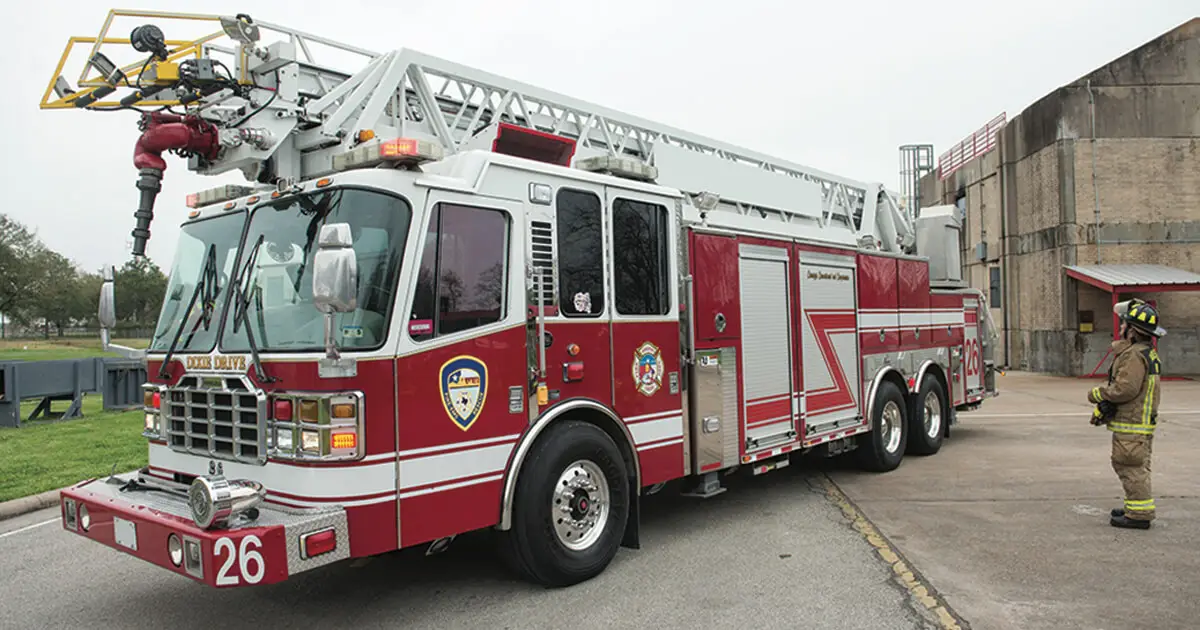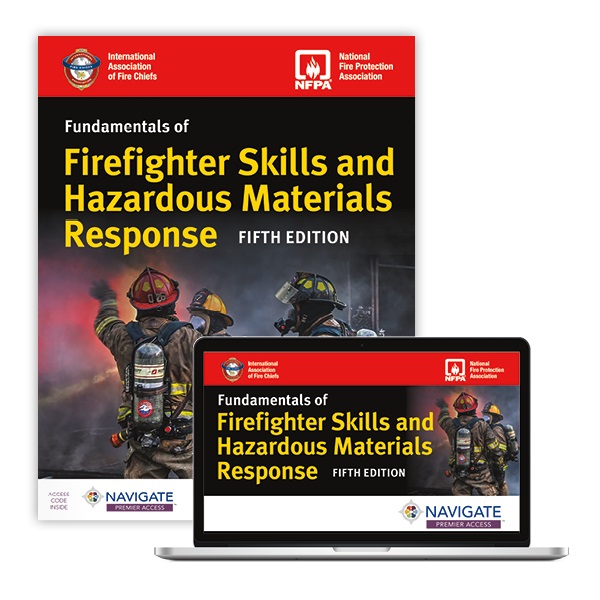NFPA 1010: What Fire Instructors Need to Know

The National Fire Protection Association (NFPA) standard, NFPA 1010: Standard on Professional Qualifications for Firefighters, represents a significant consolidation and update to the former NFPA key standards pertaining to the professional qualifications for firefighters.
As the new overarching standard on this topic under NFPA’s Emergency Response and Responder Safety Document Consolidation Plan (2024), NFPA 1010 combines content from the previous NFPA 1001: Standard for Fire Fighter Professional Qualifications (2019), NFPA 1002: Standard for Fire Apparatus Driver/Operator Professional Qualifications (2017), NFPA 1003: Standard for Airport Fire Fighter Professional Qualifications (2019), and NFPA 1005: Standard for Professional Qualifications for Marine Fire Fighting for Land-Based Fire Fighters (2019).
This consolidation offers substantial benefits for the fire service by streamlining content, reducing redundancies, and making the standards more comprehensive, cohesive, and user-friendly.
Understanding the importance of NFPA 1010 and how to effectively implement it will be critical knowledge for fire departments and training officers nationwide.
NFPA 1010 is a “One-Stop-Shop”
One of the foremost advantages of NFPA 1010 is the extensive scope of professional qualifications it encompasses. The standard consolidates job performance requirements (JPRs) for:
- Structural firefighters,
- Driver/operators,
- Aircraft rescue firefighters,
- Marine firefighters, and
- other specialty areas.
This eliminates the need to cross-reference various standards to ensure complete training.
NFPA 1010 offers a “one-stop shop” to equip personnel across these emergency response areas. The standard identifies core competencies and specific duties pertaining to each type of firefighter. This supports specialized training while also facilitating better coordination between the sub-disciplines.
Another key benefit is NFPA 1010’s role in standardizing terminologies and methodologies across the fire service.
With content from various standards now integrated, the same tactics, protocols, and vocabulary can be applied universally for essential functions like SCBA use, rescue operations, hose handling, and incident management. Such consistency at the national standard level will improve communication and interoperability for multi-agency response scenarios.
Ease of Use
The consolidation under NFPA 1010 also streamlines accessibility and updates for the standards. Stakeholders now only need to reference one document that is on a synchronized revision cycle.
This is more convenient and cost-effective compared to individually accessing and revising the previous individual standards. Having content unified supports continuity and eliminates discrepancies in information. Updates may also be integrated systematically to ensure alignment across the various firefighter qualifications.
Rather than needing to revise multiple documents, new requirements, and JPRs can be assessed holistically so that changes complement each other rather than inadvertently causing conflicts across different manuals.
The organization of NFPA 1010 facilitates user-friendliness with JPRs grouped intuitively by firefighter type and responsibilities. This layout, along with consistent terminology, fosters quicker navigation and cross-referencing. The standard also utilizes improved formatting approaches like flowcharts to visually depict protocols, requirements, and decision points. NFPA’s online solution center likewise contains helpful training resources and supplemental materials to support working with and implementing NFPA 1010.
Adaptability
A key emphasis in developing NFPA 1010 was building adaptability into the standard to accommodate different department types, resources, and local protocols across the tens of thousands of fire departments in the nation. The qualifications framework remains rigorous regarding fundamental knowledge and skills but offers flexibility in how training officers structure programs to meet the JPRs. This ability to tailor training to department needs and environments while still upholding national standards is instrumental for practical implementation.
For specialized responders such as aircraft or marine rescuers, the standard enables departments to train personnel selectively based on their actual response roles.
A firefighter can thus meet requirements strictly pertaining to structural firefighting without needing to be versed in additional disciplines they won’t encounter on the job.
This targeted approach ensures that personnel are qualified for their expected duties while avoiding information overload. With broader qualifications, for example, officer training, NFPA 1010 incorporates different levels based on the span of control and responsibilities the member will have.
This scalability helps avoid under or over-qualifying personnel, which is safer and more cost-effective for training budgets.
Because NFPA 1010 consolidates and synchronizes much information that was previously disjointed across individual documents, these enhancements further support practical, real-world applications for different departments’ needs.

Emphasis on Safety
While improved format and user-friendliness certainly provide value, the paramount importance of NFPA 1010 is the direct impact it has on firefighter health and safety through qualifications that reduce risk. This includes foundational emphasis on fitness, preventing health events, and monitoring one’s readiness to operate safely in stressful environments wearing heavy gear. It encompasses situational awareness, communication, and working within an incident management infrastructure to minimize hazards. Requirements for properly donning PPE and SCBA, escaping from untenable conditions if trapped/disoriented, or dealing with device failures can be lifesaving.
The standard reinforces safety promotion as a cultural priority rather than just a policy or guideline. JPRs address analyzing response outcomes and near misses to identify lessons for improving tactics and avoiding recurrence. NFPA 1010 likewise requires investigating firefighter fatalities to inform prevention approaches and uphold the Everybody Goes Home® philosophy. When health or safety protocols need updating, NFPA 1010 can expedite these improvements through its integrated revision cycle.
With firefighter line-of-duty deaths still numbering around 60-100 each year, NFPA 1010’s promotion of skill sets, preparedness, and decision-making capabilities that reduce risk is essential.
The standard’s holistic approach also contributes to longevity over the course of a responder’s career. This includes medical requirements and programs to help minimize physical or mental health issues from the strains of emergency work.
Implementation Planning
While the comprehensiveness of NFPA 1010 offers many advantages, its extensive scope also presents challenges for implementation. Transitioning training programs, manuals, and resources to meet updated JPRs requires thoughtful planning and resource allocation.
To significantly ease this process, fire departments should leverage the excellent new 5th edition of Fundamentals of Firefighter Skills. Public Safety Group has worked diligently with subject matter experts throughout the fire service industry to ensure that the new NFPA 1010 standard is woven extensively throughout the fifth edition to keep departments fully up-to-date. This invaluable textbook takes the guesswork out of whether a department's training covers the most current JPRs.
Given the breadth of changes in NFPA 1010, trying to overhaul everything simultaneously would likely prove overwhelming and lead to gaps or omissions.
Staggering required updates can make the transition more feasible. This allows time for instructors to get up to speed on new content through train-the-trainer programs.
Coordinating with other regional departments may also offer economies of scale for rolling out programs to meet aspects of NFPA 1010.
Planning ahead is critical, given that the standard fundamentally updates qualifications across essentially every firefighter role. Utilizing the Fundamentals of Firefighter Skills, 5th edition, as a foundation will allow departments to build upon a curriculum already aligned to the 2024 NFPA standards for a turnkey training solution.
Fundamentals of Firefighter Skills and Hazardous Materials Response Includes Navigate Premier Access
Fundamentals of Firefighter Skills and Hazardous Materials Response, Fifth Edition, provides new content that meets the intent of NFPA 1010, 2024 Edition Standard on Professional Qualifications for Firefighters that includes Chapter 6: Firefighter I (NFPA 1001) and Chapter 7: Firefighter II (NFPA 1001).
Instructors: Request More InformationRelated Content:
- Teaching Reduction of Fire Ignitions and Fire Size No Matter the Location
- Firefighter Training Ideas and Topics for Instructors
- Considerations for Instructors: How to Fight a High-Rise Building Fire
Michael A. Smith, MPA, CFEI, is a 20-year veteran of the Lynn Fire Department, Lynn, Massachusetts, where he currently serves as the head of the Fire Investigation Unit (FIU). Prior to becoming a firefighter, he served in the United States Army as a Military Police Officer for eleven years.
In addition to his work with the Lynn Fire Department, Michael Smith has been a college professor since 2012, where he teaches an array of fire science, emergency management, criminal justice, and public administration courses at institutions such as Anna Maria College, Paxton, MA, Bunker Hill Community College, Boston, MA, and North Shore Community College, Danvers, MA.
Michael Smith has worked on several publications with Public Safety Group, including Fire Service Ethics, Chief Officer: Principles and Practices, Third Edition, Fire Behavior and Combustion Processes, Second Edition, and Fundamentals of Firefighter Skills, Fifth Edition.
